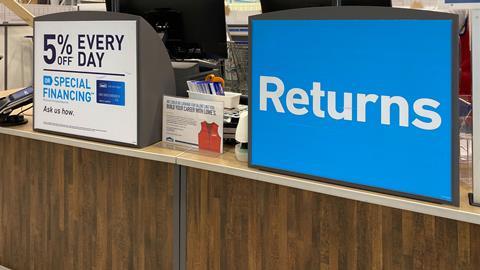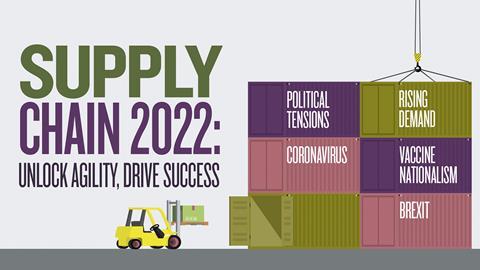PROMOTIONAL RESEARCH
While retailers are battling with supply and demand this golden quarter, returns look set to be the nightmare after Christmas. Retail Week’s Supply Chain 2022 report looks at how retailers are tackling the £5bn returns problem.
Throughout the pandemic, rising online sales have seen return rates soar. For instance, a study by research group Mintel found that almost 50% of shoppers had sent back items purchased between March 2020 and March 2021.
This issue is only expected to intensify during peak.
Retail Week’s annual Supply Chain 2022 report offers insight into the steps retailers such as Asos, Amazon, Walmart and Target are taking to innovate the returns process.
The insights form part of a wider analysis in the report, produced in association with Bis Henderson Consulting, GreyOrange, Intersystems and Snowflake, which looks at how retailers can win when it comes to the last mile – alongside considerations for first-mile success.
Walmart and Target: Saying no to returns
In the US this year, Walmart and Target have been allowing customers to keep unwanted items and refunding the purchase price instead.
These retailers are using AI engines to understand the cost associated with a return and then decide whether it makes financial and logistical sense to process it.
For instance, if an item is large or inexpensive, they’re making a call as to whether the cost associated with shipping it back is too high.
Evidently, this solution doesn’t work for luxury items, high-value goods or retailers that rely on low-value products in bulk – such as pureplay fashion retailers – but it offers one way to minimise the scale of returns.
Asos: Remedying CX at checkout
Retailers are also taking steps earlier in the path to purchase to prevent returns.
Asos and Walmart have been experimenting with augmented reality (AR) to enable shoppers to ‘try on’ products before they buy, working with virtual fitting-room service Zeekit to improve CX and ultimately drive down returns.
Zeekit, which has worked with department store chain Macy’s and sportswear brand Adidas in the past, says its virtual fitting rooms cut return rates by 36%.
Similarly, DFS has implemented the Salmon AR tool, which enables users to more accurately visualise what an item of furniture would look like in their home before purchasing it.
Amazon: Investing in store drop-offs
Several retailers have been allowing customers to return items to other retailers’ stores, making it cheaper and more efficient to collect returned goods.
Amazon and Kohl’s, for instance, have had a long-standing partnership that allows Amazon customers to return items to hundreds of the chain’s stores across the US.
During this golden quarter, retailers could look to work with the likes of gyms, cafes, restaurants and garages to make it easier for customers to bring back goods and decrease the legwork needed to process returns.
Access the Supply Chain 2022 report here to learn more about navigating returns. You’ll also get expert advice on how to:
- Finesse the first mile and navigate the warehouse space race
- Understand how to win the final mile – and whether rapid delivery is worth the trade-off
- Future-proof your supply chain against the global backdrop
- Adopt sustainability into all aspects of your operations
































